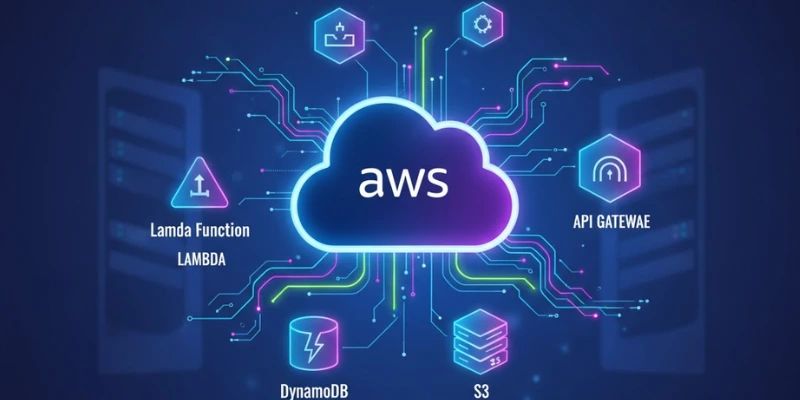
In the past, launching an application meant provisioning servers, managing operating systems, and constantly monitoring resource utilization, a complex process that slowed down innovation. AWS Serverless Computing flips this model entirely, abstracting away the infrastructure so developers can concentrate solely on writing business logic. This capability represents a significant professional advantage. For those who join AWS Training in Trichy, understanding the core benefits of serverless, such as pay-per-use billing and automatic scaling, is essential for designing efficient, next-generation applications and securing highly competitive cloud engineering positions.
The Core Concept: Abstraction of Infrastructure
The fundamental idea behind serverless computing is that you, the developer, no longer need to provision, scale, or manage any servers. AWS handles all the underlying infrastructure management, including capacity planning, patching, and fault tolerance. When an event triggers your code like a user clicking a button or file being uploaded AWS dynamically allocates the necessary computing resources, executes your function, and then shuts down the resource. You only pay for the time your code is actually running, leading to significant cost savings.
Key Serverless Components on AWS
AWS provides a complete ecosystem of serverless services that work together seamlessly. The flagship service is AWS Lambda, which runs code into response events without managing servers (Function-as-a-Service, or FaaS). Other essential components include Amazon API Gateway for creating serverless APIs, Amazon S3 for serverless object storage, and Amazon DynamoDB for a fully managed NoSQL database. Integrating these components allows for the creation of sophisticated, event-driven applications entirely free of server maintenance.
When to Use Event-Driven Architectures
Serverless is ideally suited for event-driven architectures, where an action triggers a specific function. Common use cases include real-time data processing (e.g., resizing an image immediately after it’s uploaded to S3), running scheduled tasks (cron jobs), or building highly scalable web APIs. Because Lambda scales instantly and precisely to zero, it is perfect for workloads with unpredictable or sporadic traffic patterns, making it highly efficient for business logic execution.
The Economic Advantage: Pay-Per-Use Billing
One of a most compelling reasons to adopt serverless is the significant cost advantage. Unlike traditional EC2 instances, which incur costs even when idle, AWS Lambda employs a pay-per-use model. You are billed only for the total number of requests and the compute duration consumed by your code, measured in milliseconds. This model makes serverless architecture incredibly cost-effective for applications with variable demand, ensuring resources and costs align perfectly with actual usage.
Accelerating Development Cycles
Serverless drastically shortens the development and deployment pipeline. Developers can push code changes without worrying about provisioning new servers or managing complicated infrastructure scaling. This focus on code and business logic accelerates time-to-market for new features and products. Professionals with expertise in continuous integration and deployment (CI/CD) pipelines, often gained in DevOps Course in Trichy, find serverless architectures perfectly aligned with automation principles, enabling faster, more reliable releases.
Building Highly Scalable APIs and Backends
The combination of Amazon API Gateway and AWS Lambda offers an unbeatable solution for building robust, auto-scaling web APIs and mobile backends. API Gateway handles the traffic management, authorization, and throttling, passing requests to Lambda functions that contain the application logic. This setup allows the application to handle massive, unpredictable traffic spikes seamlessly, as both services are designed to scale instantly and automatically to meet demand, ensuring a reliable user experience.
Security and Operational Benefits
While the term is “serverless,” servers still exist; AWS simply manages them. This management includes built-in security patching and updates, reducing the operational security burden on your team. Furthermore, AWS Lambda allows you to define granular permissions via IAM roles for each function, adhering to the principle of least privilege. This controlled environment enhances the overall security posture of the application, a crucial skill for anyone focusing on advanced topics in AWS Training in Erode to manage enterprise cloud risk.
Use Case: Data Processing and ETL Jobs
AWS Serverless is an excellent choice for Extract, Transform, Load (ETL) and data processing pipelines. For instance, a function can be triggered every time a new log file is dropped into an S3 bucket. The function can then process the file, transform the data, and load it into a data warehouse like Redshift or a database like DynamoDB. This event-driven, scalable, and consumption-based model replaces expensive, always-on data processing clusters, providing massive efficiency gains.
Securing a Future-Proof Cloud Career
Mastering the intricacies of AWS Serverless Computing is not just about learning the new technology; it’s about embracing the future of cloud development. Professionals who can strategically apply Lambda, API Gateway, and DynamoDB to solve real-world scalability and cost problems are highly valued across the industry. By obtaining specialized, hands-on knowledge, such as that provided in high-quality DevOps Training in Erode, you gain the expertise to build modern, agile cloud solutions, securing your position at the forefront of cloud architecture and development.
Also Check: Benefits of Moving Your Business to AWS